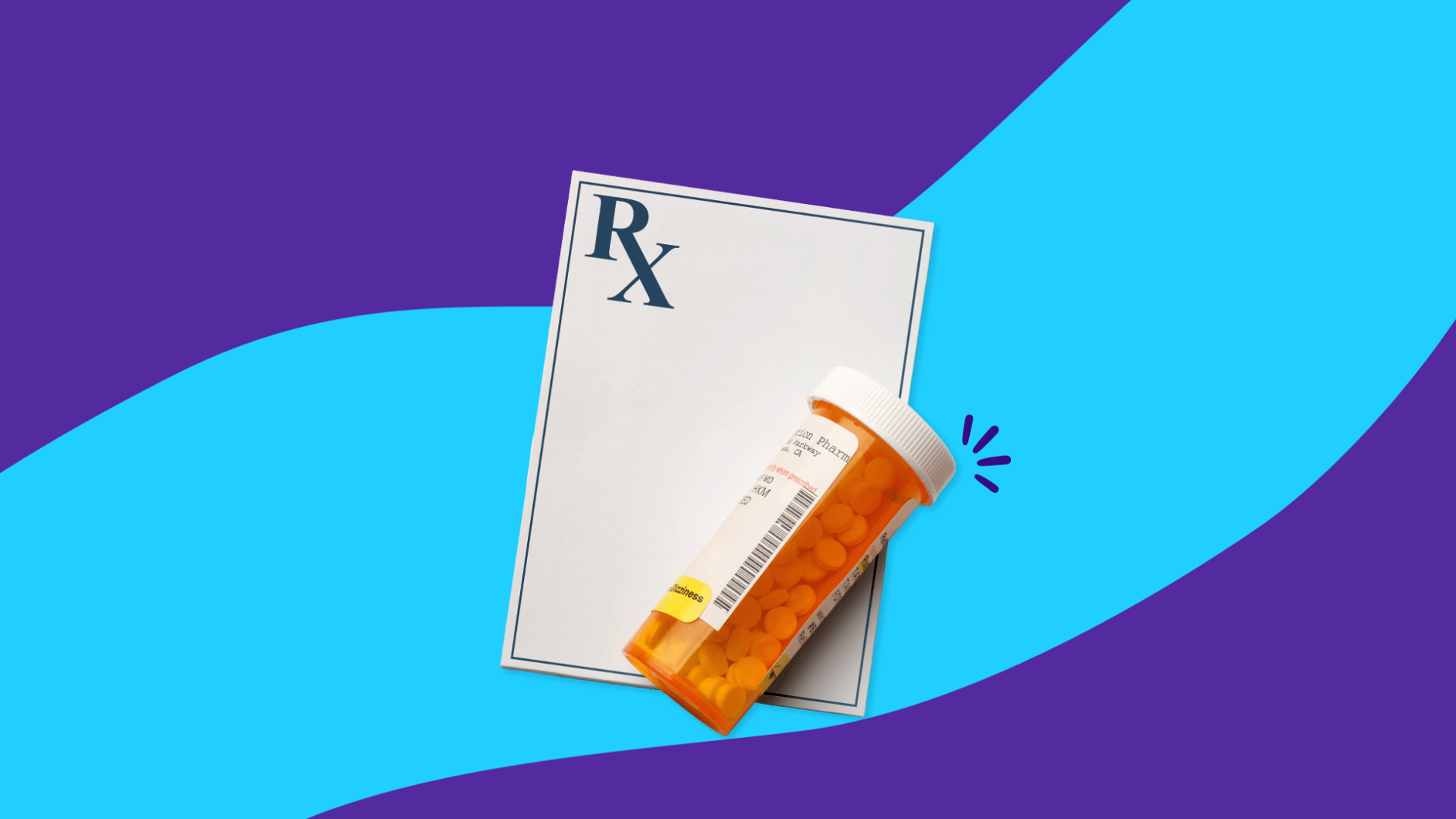Key takeaways
Furosemide is a loop diuretic that helps the kidneys eliminate excess salt and water through the urine. It treats hypertension (high blood pressure) and swelling due to certain medical conditions.
Furosemide interacts with certain antibiotics, ACE inhibitors, ARBs, NSAIDs, other medications, and some vitamins and supplements.
Interactions can affect how furosemide works and cause or worsen side effects.
Always ensure a healthcare provider knows your medical history, medication allergies, and all medicines being taken, including prescription medications, OTC drugs, vitamins, and dietary supplements.
Key takeaways | Drug interactions | Other interactions | Avoiding interactions | When to see a doctor
Furosemide is a diuretic, also commonly called a “water pill.” More specifically, it is a loop diuretic because it works on the part of the kidneys called the loop of Henle. Loop diuretics work by helping the kidneys eliminate extra water and salt from the body through the urine. Furosemide, also known by its brand name Lasix, is approved by the United States Food and Drug Administration (FDA) and is available in several forms, including oral tablet, oral solution, and injection. It is FDA-approved to treat:
- Adults and children with edema (swelling) associated with congestive heart failure (CHF), liver cirrhosis, or kidney (renal) disease
- Adults with high blood pressure (furosemide may be used alone or in combination with other medications)
Furosemide interacts with certain antibiotics, ACE inhibitors, angiotensin receptor blockers (ARBs), nonsteroidal anti-inflammatory drugs (NSAIDs), and other medications. It also interacts with alcohol. It is important to be aware of furosemide interactions as other medications can affect furosemide’s effectiveness and cause or worsen side effects, such as blurred vision, dry mouth, and headache. Serious adverse effects may include low potassium levels, allergic reactions, dehydration, hearing loss, ringing in the ears, high blood sugar, and low blood pressure. Continue reading to learn more about furosemide interactions.
RELATED: Lasix side effects and how to avoid them
Furosemide drug interactions
Furosemide interacts with various prescription and over-the-counter medications, including certain antibiotics, several types of blood pressure medications, and others, as outlined below.
Certain antibiotics
Aminoglycoside antibiotics are a type of antibiotic that has a potentially serious side effect called ototoxicity. Ototoxicity is a side effect of certain medications and causes inner ear damage. It can affect hearing and balance and cause tinnitus (ringing in the ears). Furosemide is also associated with ototoxicity. Combining furosemide with an aminoglycoside antibiotic, such as Tobi (tobramycin), an inhaled medication used to prevent respiratory infections in people with cystic fibrosis, can increase the risk of ototoxicity. The risk is even higher in people with kidney problems. The prescribing information states that combining furosemide with an aminoglycoside antibiotic should be avoided except in a life-threatening situation.
Vancomycin is another antibiotic that may cause ototoxicity. Experts recommend using caution in prescribing vancomycin with furosemide. For example, a healthcare provider may prescribe the combination if there are no other alternatives and monitor the patient closely.
Another class of antibiotics, cephalosporins, can potentially interact with furosemide. Furosemide can increase the risk of kidney problems associated with cephalosporins, even in people with minor or occasional kidney problems. Examples of cephalosporins include Keflex (cephalexin) and Omnicef (cefdinir). Healthcare providers may avoid the combination, or if the combination is prescribed, will closely monitor the patient.
ACE inhibitors and angiotensin receptor blockers (ARBs)
ACE inhibitors and ARBs are prescription drugs used to treat high blood pressure and other heart-related conditions.
- Examples of ACE inhibitors include Altace (ramipril), Vasotec (enalapril), and Zestril (lisinopril).
- Examples of ARBs include Cozaar (losartan), Diovan (valsartan), and Benicar (olmesartan).
Some people do take a combination of one of these medications with furosemide. However, with this combination, there is a risk of severely low blood pressure and kidney problems, including kidney failure. If furosemide is prescribed with one of these drugs, the patient will closely monitor their blood pressure and be asked about symptoms such as dizziness and lightheadedness. A decreased dose or change in medication may be required.
Nonsteroidal anti-inflammatory drugs (NSAIDs)
NSAIDs are medications used to treat pain, inflammation, and fever. There are many NSAIDs available—including some by prescription and some that are available over the counter. Examples of NSAIDs include Motrin (ibuprofen), Celebrex (celecoxib), Indocin (indomethacin), naproxen, and Mobic (meloxicam).
NSAIDs may affect the kidneys, and there is a higher risk of kidney problems when a diuretic is combined with an NSAID. NSAIDs can also affect how well furosemide works and cause fluid retention. Those who take furosemide with an NSAID will be closely monitored for blood pressure as well as kidney function. Because NSAIDs can be found in many OTC products, including pain relievers and a combination of cough and cold products, check with a healthcare provider before choosing an OTC medication. A healthcare provider may recommend a Tylenol (acetaminophen)-based product instead.
Thyroid hormones
People who take high doses of furosemide (more than 80 mg daily) and a thyroid hormone such as Synthroid (levothyroxine) may experience irregularities in thyroid hormone levels. People who require thyroid hormones, as well as a high dose of furosemide, will be closely monitored.
Ethacrynic acid
Ethacrynic acid is a strong diuretic that is sometimes prescribed when other diuretics have not worked. This medication should never be used with furosemide, as both medications have the potential to increase the toxicity of the other one, especially ototoxicity.
Lithium
Lithium is a mood stabilizer used to treat bipolar disorder. Lithium should not be taken with diuretics because diuretics can cause lithium to clear the body more slowly, causing a high risk of lithium toxicity, a life-threatening condition that requires emergency medical treatment.
Sucralfate
Sucralfate is a medication used to prevent and treat duodenal ulcers. Combining furosemide and sucralfate can affect how well furosemide works, making furosemide not work as well. Patients who take both medications should take the medications at least two hours apart and will be closely monitored to ensure that furosemide is working properly.
Cyclosporine
Cyclosporine is an immunosuppressant medication used for various purposes, including rheumatoid arthritis and psoriasis, and it prevents organ rejection after a transplant. Combining furosemide and cyclosporine increases the risk of gouty arthritis due to a buildup of uric acid.
Cisplatin
Cisplatin is a chemotherapy drug used to treat certain types of cancers. Combining cisplatin and furosemide increases the risk of ototoxicity. Also, cisplatin can cause kidney damage, so if it is taken with furosemide, the healthcare provider will lower the dose of furosemide and monitor fluids closely.
Phenytoin
Dilantin (phenytoin) is an anticonvulsant medication used to prevent and treat seizures. Phenytoin interferes with the way furosemide works on the kidneys, leading to lower absorption of furosemide. This means furosemide may not work as well. If this combination is prescribed together, the patient will be closely monitored.
Other furosemide interactions and considerations
Additionally, there are several other interactions, dietary considerations, and other considerations associated with furosemide.
Furosemide and alcohol
Furosemide can cause a person to feel dizzy and lightheaded. In some cases, furosemide can also cause a drop in blood pressure (and faint) when standing up too quickly. This is called orthostatic hypotension. Alcohol can worsen these side effects. Being more dizzy and lightheaded can increase the risk of falls and fractures. Consult a healthcare provider about alcohol consumption. While taking furosemide, it’s best to avoid alcohol. Getting up slowly and holding on to something sturdy for support is a good idea to avoid falls. When getting out of bed, go slow and rest each foot on the floor for a few minutes before standing up.
Furosemide and dietary changes
While taking furosemide, a healthcare provider may recommend taking a potassium supplement (or eating more dietary potassium such as bananas, raisins, prunes, and orange juice) and implementing certain dietary changes such as a low-salt or low-fat diet. They may also recommend hydrating (to prevent dehydration) by drinking certain fluids daily. Ask the healthcare provider for more information on dietary changes that may be needed to make while taking furosemide.
Furosemide and licorice
Eating large amounts of licorice while taking furosemide can increase the risk of hypokalemia (low potassium levels). If eaten on occasion, chances are, it won’t be a problem. However, if licorice is regularly consumed, check with the healthcare provider regarding an interaction with furosemide.
Furosemide and certain medical conditions
Furosemide is not safe for everyone. Do not take this medication if:
- Allergic to furosemide or any ingredient in the medication
- Produce very little or no urine
- Experience dehydration
There are also many medical conditions where the healthcare provider will weigh benefits vs. risks in deciding if furosemide can be taken, so make sure a doctor knows about any medical conditions.
How to minimize furosemide interactions
Furosemide has many potential interactions, but in many cases, it can still be taken safely with some precautions.
Always consult a healthcare provider before beginning a new medicine. Before starting furosemide, make the provider aware of any medical conditions, especially if you:
- Are pregnant, trying to become pregnant, or breastfeeding
- Are vomiting
- Have diarrhea
- Have gout
- Have heart disease
- Have an electrolyte imbalance (magnesium, calcium, potassium, or sodium)
- Have liver disease
- Have a thyroid condition
- Have kidney disease
- Are allergic to furosemide, sulfa drugs (also known as sulfonamides), or any other medicines
Tell a physician about all medications being taken, including prescription and OTC medicines, vitamins, and supplements. While taking furosemide, do not start any new medications unless approved by a healthcare professional.
A healthcare provider may need to change or adjust the dose of furosemide (or another medicine) if there is a potential drug interaction. Always take medication as directed by a healthcare provider.
While taking furosemide, be aware of potential warning signs of drug interactions, such as symptoms of low potassium levels like muscle cramps, fatigue, and fast or irregular heartbeat. If there are any questions or concerns about drug interactions, always consult a healthcare provider for medical advice.
When to talk to a healthcare provider about furosemide interactions
While this article provides an overview of furosemide interactions, it is not a complete list of every possible interaction. Inform healthcare providers of all medications, encompassing prescription and over-the-counter drugs, vitamins, and dietary supplements, alongside any existing medical conditions. This helps ensure proper management and monitoring of any health conditions. Also, while taking furosemide, do not start any new medication unless approved by a healthcare provider.
Sources
- Lasix – furosemide tablet, National Library of Medicine DailyMed (2023)
- Furosemide, StatPearls (2023)
- Loop diuretics, StatPearls (2023)
- Furosemide (Rx), Medscape (2023)
- Furosemide, National Library of Medicine MedlinePlus (2017)
- Furosemide tablets, Cleveland Clinic (2023)
- Furosemide, Prescribers’ Digital Reference (2023)
- Furosemide drug usage statistics, United States, 2013-2020, ClinCalc DrugStats Database (2023)
- Ototoxicity, Cleveland Clinic (2023)











